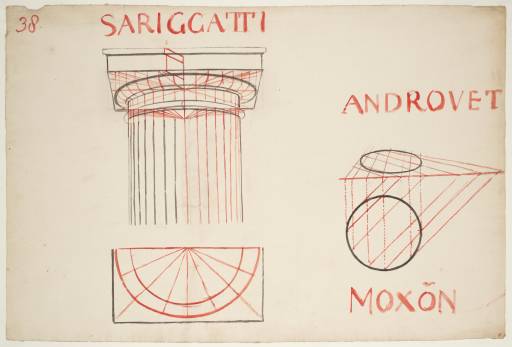Exhibition history
References
How to cite
Andrea Fredericksen, ‘Lecture Diagram 38: Method for a Tuscan Capital (after Lorenzo Sirigatti) and a Circle (attributed to Jacques Androuet du Cerceau and Joseph Moxon) c.1810 by Joseph Mallord William Turner’, catalogue entry, June 2004, revised by David Blayney Brown, January 2012, in David Blayney Brown (ed.), J.M.W. Turner: Sketchbooks, Drawings and Watercolours, Tate Research Publication, December 2012, https://www

